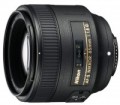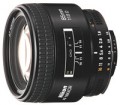DxOMark rating
The result shown by the lens in the DxOMark rating.
DxOMark is one of the most popular and authoritative resources for expert testing of photography devices. According to the test results, the lens receives a certain number of points; The more points, the higher the final score.
Viewing angles
This parameter determines the size of the area of the scene being shot that falls into the frame. The wider the viewing angles, the larger the area the lens can capture in one shot. They are directly related to the focal length of the lens (see "Focal length"), and also depend on the size of the specific matrix with which the optics are used: for the same lens, the smaller the matrix, the smaller the viewing angles, and vice versa. On our website, in the characteristics of optics, viewing angles are usually indicated when used with the matrix for which the lens was originally designed (for more details, see "Matrix Size").
Minimum focus distance
Minimum focus distance (m) - the smallest distance from which you can focus on an object and take a photo. Usually it ranges from 20 cm for wide-angle lenses to several metres for telephoto. In the macro mode of the camera or with the help of macro lenses, this distance can be less than 1 centimeter.
Maximum zoom
The degree of magnification of the object being shot when using a
lens for macro shooting (that is, shooting small objects at the maximum possible approximation, when the distance to the subject is measured in millimetres). The degree of magnification in this case means the ratio of the size of the image of the object obtained on the matrix of the camera to the actual size of the object being shot. For example, with an object size of 15 mm and a magnification factor of 0.3, the image of this object on the matrix will have a size of 15x0.3=4.5 mm. With the same matrix size, the larger the magnification factor, the larger the image size of the object on the matrix, the more pixels fall on this object, respectively, the clearer the resulting image, the more details it can convey and the better the lens is suitable for macro photography. It is believed that in order to obtain macro shots of relatively acceptable quality, the magnification factor should be at least 0.25 – 0.3.
Autofocus drive
A type of drive that ensures the movement of lens structural elements during automatic focus. Currently, the following types can be used:
—
Ultrasonic motor. The most advanced type of drive to date. Ultrasonic motors are much faster than conventional motors, provide higher accuracy, consume less power and are virtually silent. However, their cost is quite high.
—
Stepper motor. Drive control focal length and zoom (zoom). This type of motor is used for the most part only in full-size digital cameras. Among the advantages of a stepper motor, one can note: high reliability and accuracy of operation; in addition, it does not require power supply to maintain focus and zoom. Of course, stepper motors are not without drawbacks. Among the minuses can be identified: slow speed and increased noise. Additionally, a stepper motor is characterized by large dimensions and a rather large weight, which physically does not allow this type of drive to be integrated into the optics of mobile phones and ultra-compact cameras.
— Motor. In this case, an electric
motor of a traditional design is meant. Such drives are simple and, as a result, inexpensive. Their disadvantages are the relatively low speed of operation, as well as the noise produced during this; the latter can sometimes be critical — for example, when shooting wildlife. Recently, designers have been us
...ing various tricks to neutralize these shortcomings, but in general, the characteristics of conventional motors still remain relatively modest.
— Is absent. The complete absence of an autofocus motor in the lens. Focus such optics can be carried out either by the “screwdriver” system, or strictly manually (for more details on both options, see below).AF drive (screw driven)
The presence in the
lens of an autofocus drive of the "screwdriver" type. Lenses of this design do not have their own autofocus motor at all — it is located in the camera. Interchangeable optics, on the other hand, carries only the focus mechanism itself and has a special socket, with which, when installing the lens, the axis of the camera motor is joined.
Historically, the "screwdriver" is one of the first types of autofocus, but lenses and cameras with this feature are still widespread, in particular with Pentax and Sony Alpha. There are several reasons for this: although “screwdrivers” lose to ultrasonic drives, for the most part they outperform lenses with traditional motors; at the same time, due to the transfer of the engine to the camera, the weight and dimensions of the lens are reduced.
Internal focus
Lenses using the
internal focus system. In such optics systems, focus is carried out only due to the movement of elements inside the lens body; the outer parts remain completely fixed and the size of the lens does not change. This provides additional convenience — in particular, it allows you to easily use petal hoods and those types of filters for which the correct position on the lens is important (in particular, gradient ones). In addition, the absence of moving elements from the outside has a positive effect on security and resistance to dust / precipitation (although the specific degree of dust and water protection may be different).
Design (elements/groups)
The number of elements (in fact, the number of lenses) included in the design of the lens, as well as the number of groups in which these elements are combined. Usually, the more elements provided in the design, the better the lens handles with distortions (aberrations) when light passes through it. On the other hand, numerous lenses increases the dimensions and weight of the optics, reduces light transmission (for more details, see "Aperture") and also puts forward increased requirements for the quality of processing, which affects the cost of the lens.
Number of diaphragm blades
The number of blades provided in the design of the diaphragm (for details, see "Minimum aperture"). In fact, this parameter is important when shooting scenes with pronounced bokeh (blurred background) and a small depth of field: the more petals the aperture has, the smoother the glare from out-of-focus objects will turn out, while with a small number of petals they can look like polygons. The number of aperture blades has almost no effect on other shooting parameters. Modern lenses have an average of 7-9 petals; the smoothing provided by them in most cases is considered quite sufficient.

